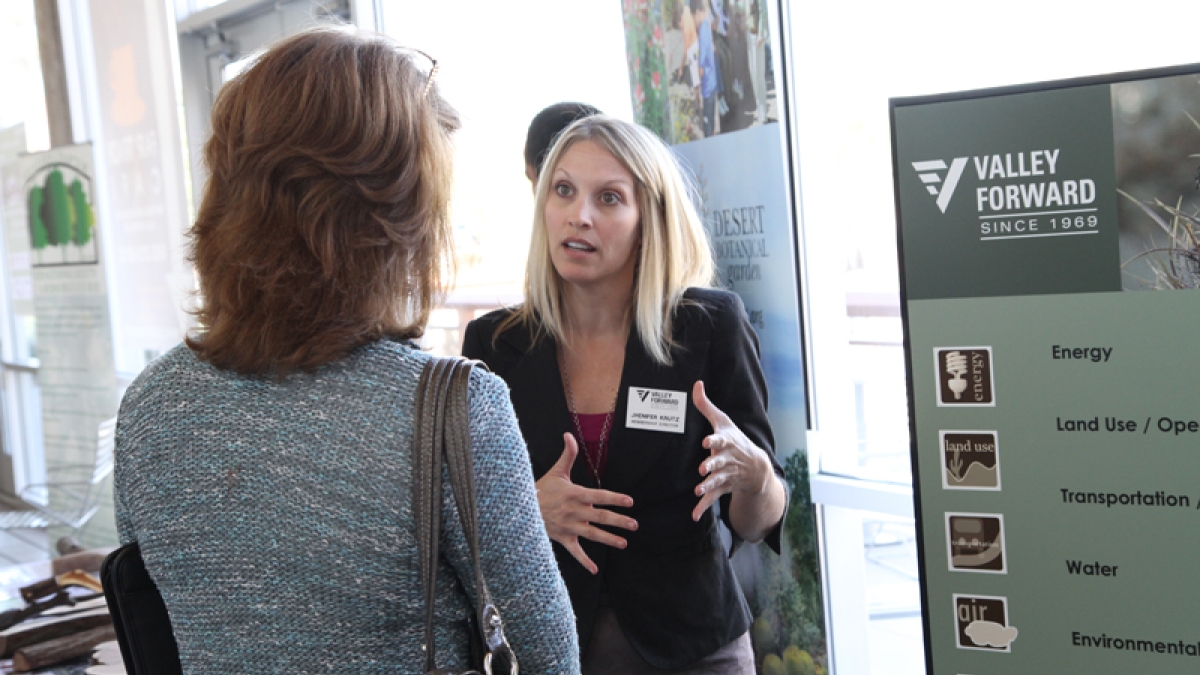Tree and Shade summit receives environmental award

Shade – we all crave it during sun-scorched days, and the shade that trees provide creates an escape from the heat. So where are all the trees?
The Sustainable Cities Network at Arizona State University’s Global Institute of Sustainability is aware of this need for more trees in our urban world. Partnering with the cities of Glendale, Mesa, and Phoenix, the Network hosted the Valley’s first Regional Tree and Shade Summit on March 9, in Phoenix. The summit brought together public officials, municipal staff, nonprofit organizations, and professional associations to identify strategies for increasing tree and shade and green infrastructure, and creating a healthier, more livable and prosperous Arizona.
On Sept. 17, the Regional Tree and Shade Summit received an Award of Merit at Valley Forward’s annual Environmental Excellence Awards program in the Environmental Education/Communication: Public Sector category. The awards recognize outstanding environmental achievement and projects that promote environmental initiatives.
Funded by the State of Arizona Forestry Division and the U.S. Department of Agriculture Forest Service, the Regional Tree and Shade Summit stressed the importance of collaboration in cultivating green infrastructure. By bringing together those who have the power and skills to address the problem, the Summit set out to increase awareness about tree and shade issues, and promote practices to maintain trees and shade.
Local and national experts spoke on the importance of coordinating efforts to increase green infrastructure in Arizona. They addressed the importance of increasing the tree canopy, overcoming obstacles with local codes, increasing the quality of life in neighborhoods, reducing water consumption, and promoting sustainable landscape design and maintenance. These topics inspired lively discussions and diverse perspectives of how to address these challenges.
The City of Phoenix’s Shade Phoenix 2030 plan was presented in order to provide attendees with a working model that could be built upon for future success in expanding the region’s urban forest. By providing community leaders with the blueprints for the City of Phoenix’s plans, these communities can build and adapt their own plans to increase urban forestry in their cities.
Scholarships were awarded to eight arborists in valley cities to protect the future of our urban forests, increasing the number of certified arborists working for government agencies. This part of the program is meant to help minimize long-term costs associated with tree planting and maintenance, contribute to water conservation efforts, aid in educating additional city staff on the importance of green infrastructure, and promote and expand regional urban forestry efforts.
In order to continue the success of the Summit, ASU’s Sustainable Cities Network is hosting Green Infrastructure Workgroup meetings. These meetings aim to continue discussions, networking, and collaboration in order to increase awareness and understanding of green infrastructure.
The award-winning Summit was held in downtown Phoenix at the Civic Space Park, providing a location that exemplifies some of the sustainable techniques featured during the Summit. Participants were given a tour of the park and educated on how it is possible to blend trees and landscape to create sustainable public spaces.